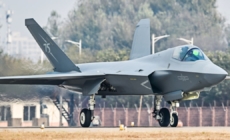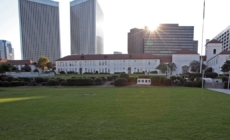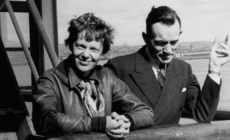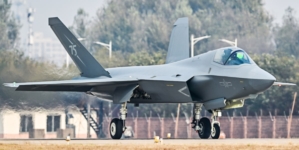-
Donald Trump says he has no plans to sell DJT stock, calls for probe into “market manipulators” - 11 mins ago
-
Titans HC Brian Callahan Makes Final Decision on Will Levis Starting in Week 10 - 25 mins ago
-
New Chinese stealth fighter to take center stage at China’s biggest airshow - 27 mins ago
-
Authorities investigating Liam Payne’s death rule out suicide in One Direction singer’s fatal fall - 35 mins ago
-
FOX’s NFL pregame show will originate from Naval Base San Diego on Sunday - 39 mins ago
-
WWE Superstar Karl Anderson Out Until Wrestlemania Due to Injury - about 1 hour ago
-
Beverly Hills High limits gatherings in wake of Trump celebrations - about 1 hour ago
-
Prince William says 2024 ‘has been the hardest year in my life’ - about 1 hour ago
-
2024 NFL odds: AFC North sees huge shift after Thursday night result - about 1 hour ago
-
Parting Shot: Donald Trump’s Historic Week and Its Impact on Pop Culture - 2 hours ago
Ukraine ‘Achilles’ Battalion Commander Issues Warning About Western Drones
Just one Ukrainian drone battalion the “Achilles,” which specializes in uncrewed aerial vehicle (UAV) strikes by Kyiv’s 92nd Assault Brigade—uses on average 3,000 first person-view drones a month. But they are not opting for some Western-made weapons, or the most sophisticated drones, simply because they cannot do the job.
“The best examples of weapons,” such as systems like the GPS-guided Excalibur artillery shells, don’t work “at all,” Rustam Nurgudin, the executive officer of the battalion, told a briefing of defense companies and journalists in London.
“The best drones can’t fly,” he said.
Drones have defined the more than two and a half years of war in Ukraine, the cycle for updating the designs as short as little over a month. Kyiv’s domestic industry is pumping out drones, and Ukrainian officials say the war-torn country is able to produce millions of drones each year. Kyiv also has a new branch to its military dedicated exclusively to drone warfare.
Kostya Liberov/Libkos via Getty Images
The problem, Kyiv officials stress, is funding. Ukraine’s capability far outstrips the money being funneled into the more than 250 companies involved in drone production, said Oleksandr Kamyshin, Ukraine’s former strategic industries minister who is overseeing Kyiv’s defense industry.
“It’s so frustrating, it’s so embarrassing, to be capable, but not to have enough resources” for the defense industry, Kamyshin, now a presidential adviser on strategic affairs with a focus on the military-industrial complex, told Newsweek in Kyiv in mid-September.
But also tossed into the mix is electronic warfare, and its ability to confuse, throw off and shut down navigation systems on weapons flying across the battlefield each day.
Although Ukraine’s international backers have donated their own drones and many types of weapons to the war effort, experts say the vast majority of these are ill-suited to the constantly evolving front lines snaking through eastern Ukraine and along the border with Russia.
Some Western-made drones struggle to cut through dense electronic warfare systems on the battlefield. Another factor is cost—Kyiv burns through drones, meaning they cannot be expensive.
Among NATO countries and their militaries, “nobody understands what’s going on,” Nurgudin said. There is still a misunderstanding of what “up-to-date” war looks like, heavily informed by fighting in wars like Afghanistan and Iraq, he added.
The UAV battalion was first deployed around Kharkiv, before heading for the Donetsk city of Bakhmut, which Russia has controlled for around a year and a half. The soldiers were then sent back to Kharkiv to fight around the city of Kupiansk, Nurgudin said.
Moscow’s forces had taken control of Kruhliakivka, near Kupiansk, the Russian Defense Ministry said on Wednesday.
Ukraine’s military has not acknowledged that the settlement had been taken.
Fighting has blazed in Kharkiv since the early days of the full-scale war, and swathes of the northeastern Ukrainian region were captured by Russia in 2022 before a lightning Ukrainian counteroffensive peeled back Moscow’s grip on much of the region.
The front lines in Kharkiv have been relatively static in the roughly two years since, although Moscow launched a cross-border push into pockets of northern Kharkiv earlier this year.
The U.S.-based Institute for the Study of War think tank said on Saturday that Russia had not made any confirmed advances on the chunk of front line sweeping down from east of Kupiansk to west of Russian-controlled Svatove and Kreminna, cities in the eastern Luhansk region.
Russia’s Ministry of Defense said on Saturday it had captured Pershotravneve, a village west of Svatove.
Whether Russia advances Kupiansk depends on how many shells Ukraine has in stock to load into its artillery systems, whether it has enough anti-aircraft systems to go after Russian jets and how many fighters end up in the area, he said.
“We don’t know how many, for instance, North Korean soldiers will appear unexpectedly in front of us,” Nurgudin said.
Ukrainian, South Korean and Western intelligence have said in recent weeks that North Korea was sending between 10,000 and 12,000 soldiers to Russia to bolster Moscow’s war effort against Kyiv.
The U.S. said on Thursday that around 8,000 were stationed on the border with Ukraine. “We’ve not yet seen these troops deploy into combat against Ukrainian forces, but we would expect that to happen in the coming days,” U.S. Secretary of State Antony Blinken, said during a joint press conference with U.S. Defense Secretary Lloyd Austin, and South Korea’s Foreign and Defense Ministers, Cho Tae-yul, and Kim Yong-hyun.
Source link































